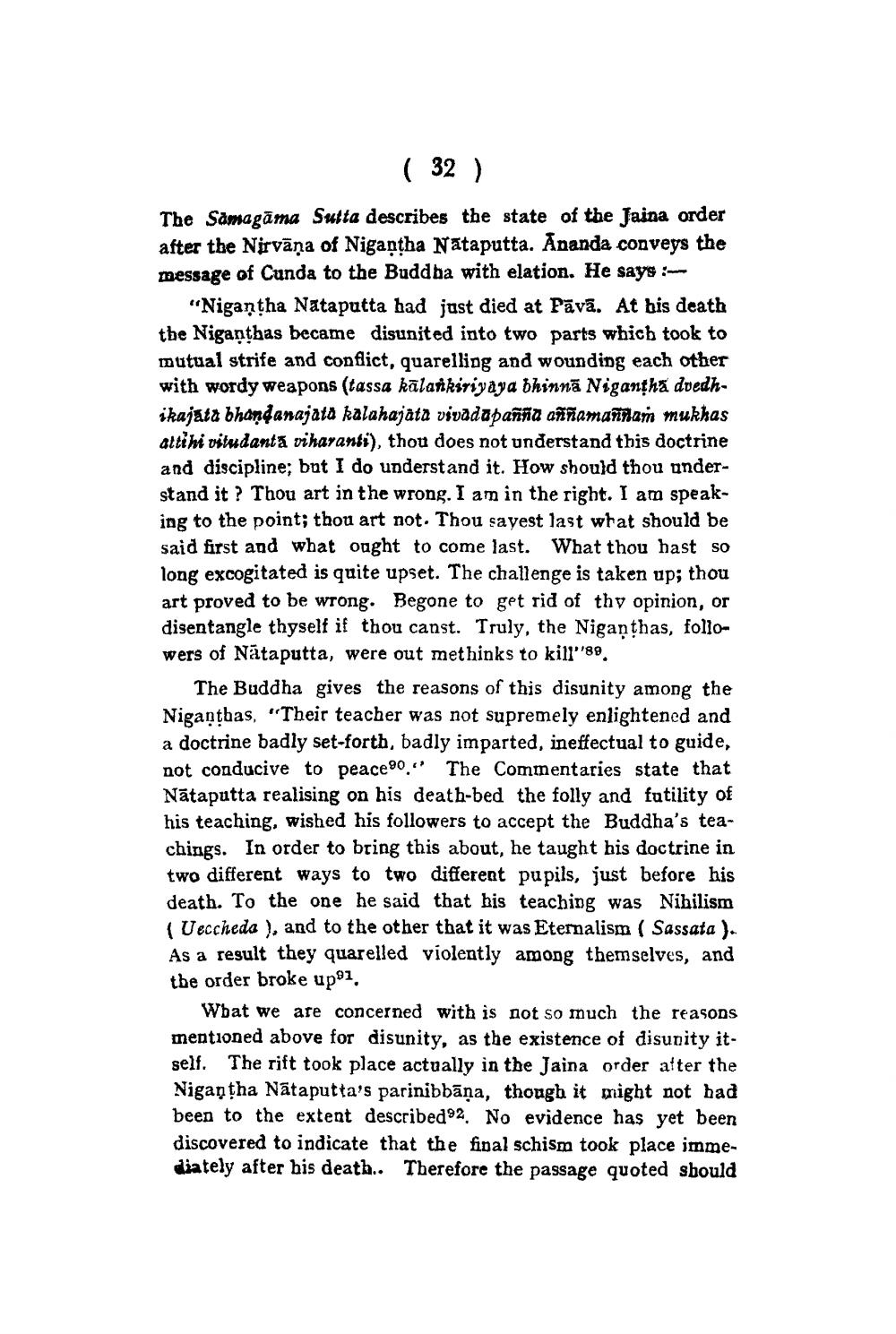________________
( 32 )
The Samagāma Sutta describes the state of the Jaina order after the Nirvāņa of Nigantha Nataputta. Ananda conveys the message of Cunda to the Buddha with elation. He says:
"Nigantha Nataputta had just died at Pāvā. At his death the Niganthas became disunited into two parts which took to mutual strife and conflict, quarelling and wounding each other with wordy weapons (tassa kālankstiyaya bhinnā Nigantha duedhikajata bhandanajata kalahajata vivadapanna annamannan mukhas attini vitudanta viharanti), thou does not understand this doctrine and discipline; but I do understand it. How should thou understand it? Thou art in the wrong. I am in the right. I am speaking to the point; thou art not. Thou sayest last what should be said first and what ought to come last. What thou hast so long excogitated is quite upset. The challenge is taken up; thou art proved to be wrong. Begone to get rid of thy opinion, or disentangle thyself if thou canst. Truly, the Niganthas, followers of Nātaputta, were out methinks to kill''89.
The Buddha gives the reasons of this disunity among the Nigantbas, "Their teacher was not supremely enlightened and a doctrine badly set-forth, badly imparted, ineffectual to guide, not conducive to peace 80. The Commentaries state that Nātaputta realising on his death-bed the folly and futility of his teaching, wished his followers to accept the Buddha's teachings. In order to bring this about, he taught his doctrine in two different ways to two different pupils, just before his death. To the one he said that his teaching was Nihilism (Veccheda ), and to the other that it was Eternalism (Sassata ). As a result they quarelled violently among themselves, and the order broke upoi,
Wbat we are concerned with is not so much the reasons mentioned above for disunity, as the existence of disunity itself. The rift took place actually in the Jaina order after the Nigantha Nātaputta's parinibbāņa, though it might not had been to the extent described 92. No evidence has yet been discovered to indicate that the final schism took place immediately after his death.. Therefore the passage quoted sbould




